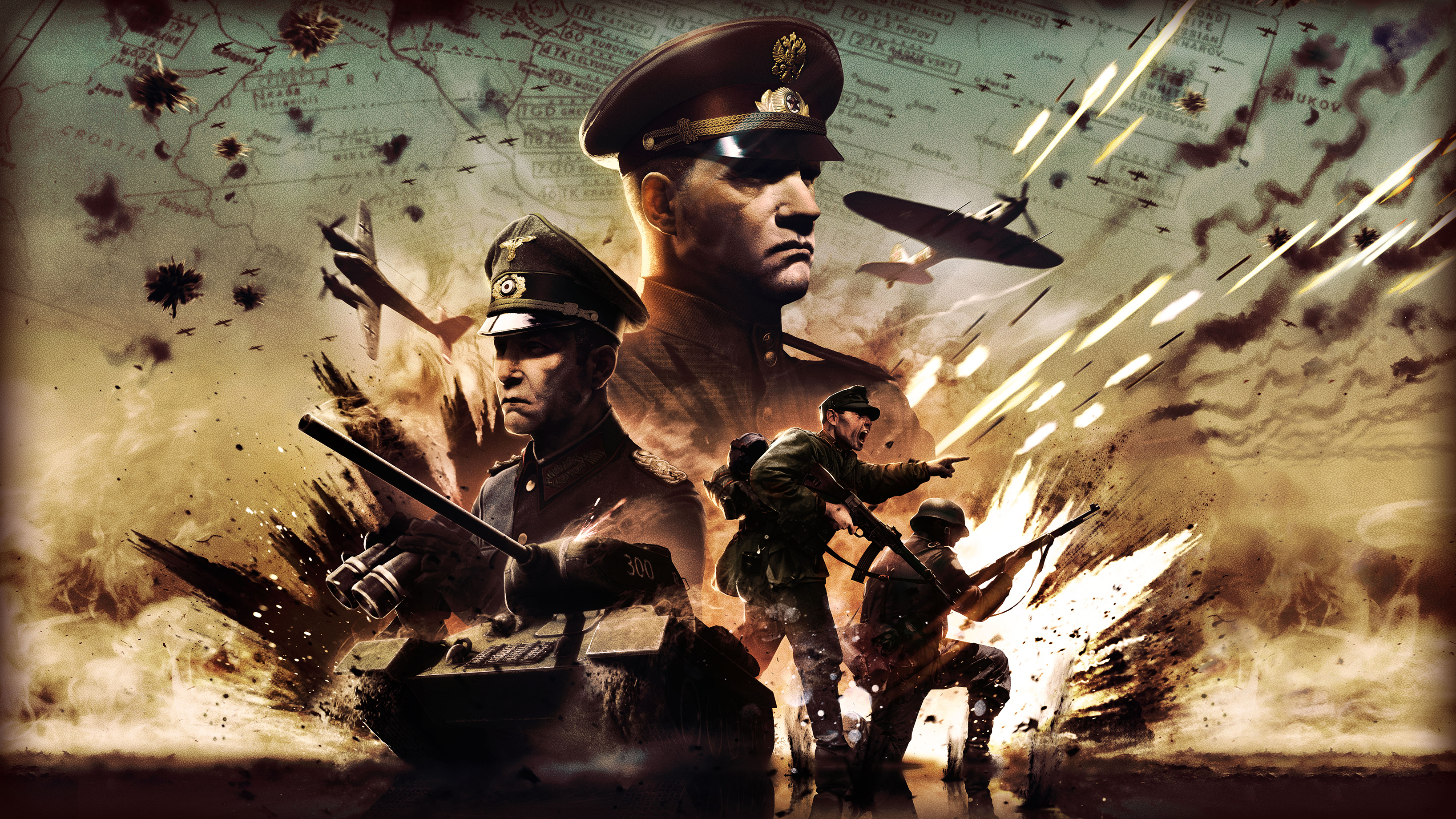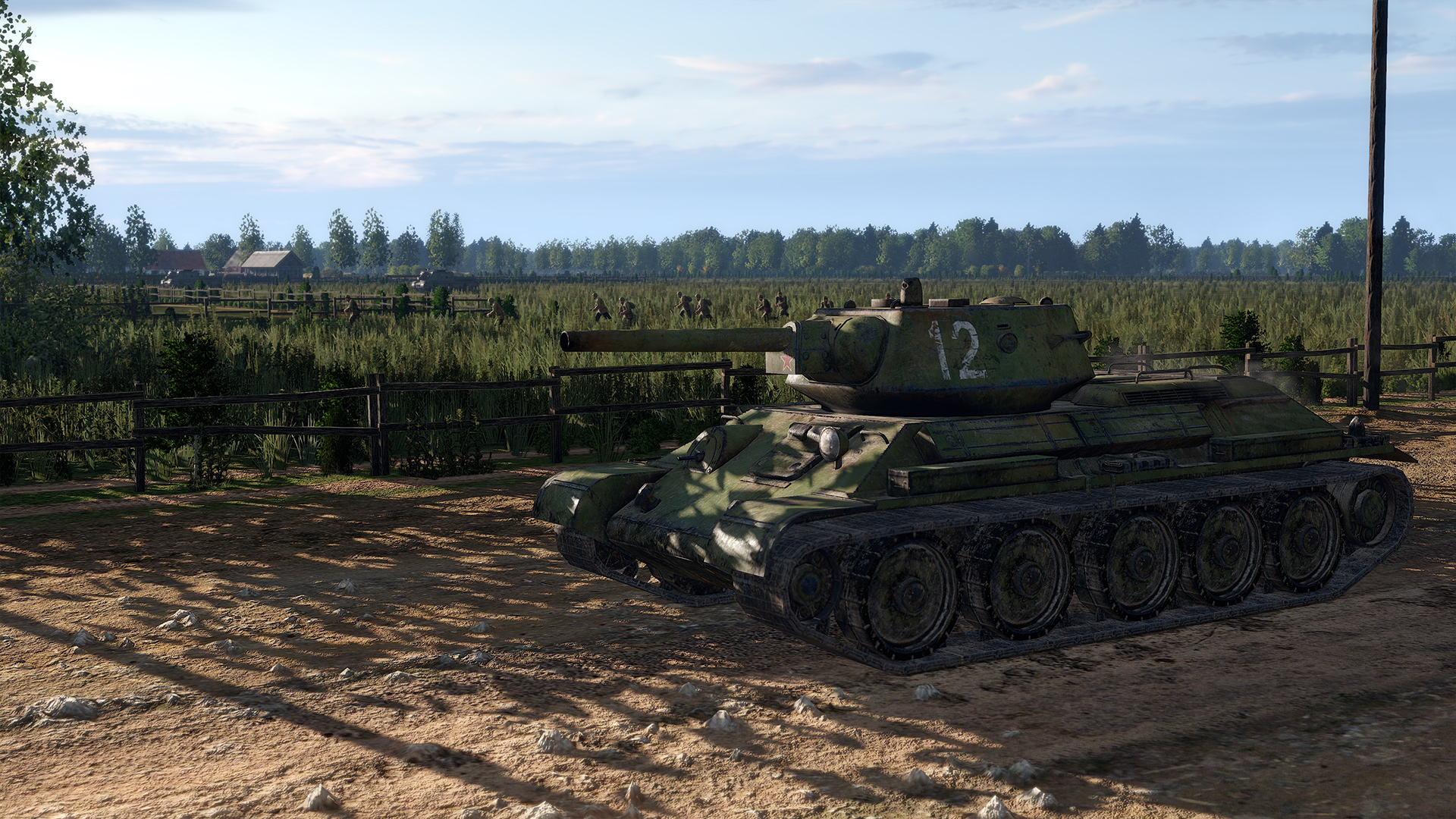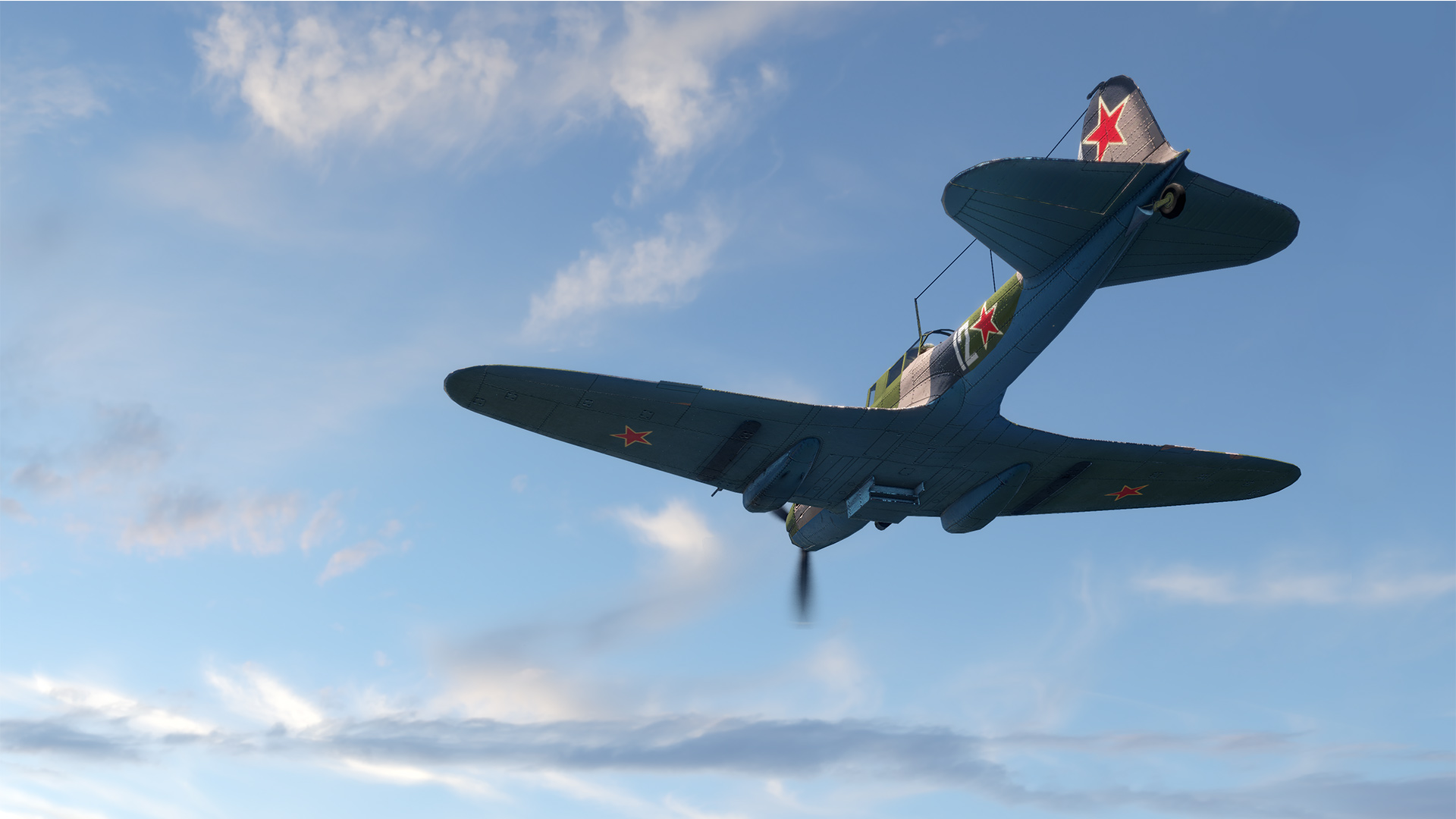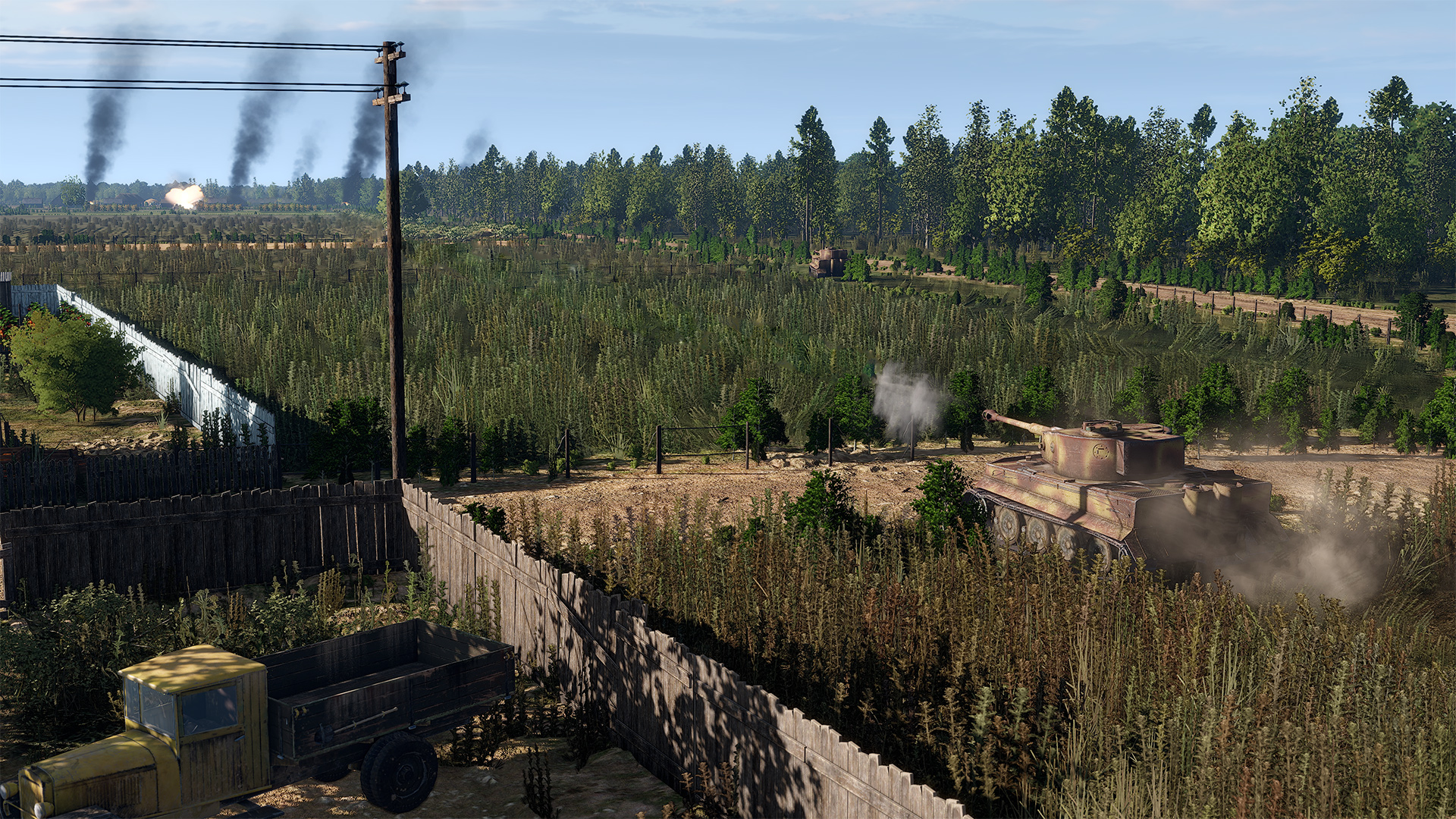Steel Division 2 is a 1:1 scale RTS inside a massive turn-based wargame
Take command of large and small-scale warfare on World War 2's Eastern Front.

Steel Division 2 doesn’t just put a single division under your control like its predecessor, Steel Division: Normandy 44, but instead gives you command of an entire army. Set during Operation Bagration, the World War 2 Soviet campaign, real-time battles are connected by huge dynamic campaign maps. It’s an RTS built inside a turn-based wargame, with everything recreated on a 1:1 scale, from the size of the tanks to the maps. One minute you’ll be commanding tens of thousands of troops across 150x100 km warzones, the next you’ll be so close to the action that you’ll see the tank treads churning up dirt as they charge towards the enemy.
During a remote demo, I watch as Eugen Systems game director Alexis Le Dressay sends in columns of Soviet vehicles, clogging the arteries that flow into Minsk and the surrounding towns. They are on their way to liberate the city, but only if they can smash through the entrenched Germans. It will take more than one attempt. This is all taking place on one of the turn-based campaign maps, as preparations are made to march west. The Soviets have around 40,000 troops and 1,000 tanks, while the Germans have a quarter of that.
What might have been a single battle in Steel Division: Normandy 44 is drawn out into a larger conflict. Taking Minsk means finding a way to pierce the German line, pushing forward through villages and crossings to reach the city. It’s a fight that will take multiple in-game days, spread out across the huge map full of player-defined objectives.

“We wanted to add value to the solo campaign,” says Le Dressay. “We wanted to make sure that the battles you fight are dependent on the higher level stuff.” On the campaign map, you manage the entire army, handle troop movements, and deal with supply problems, with each action having a tangible impact on the real-time battles.
A breakthrough point is selected on the campaign map, highlighting the nearest battalions. Five can contribute to the battle, but not all necessarily at the same time. Like its predecessor, Steel Division 2’s units are assigned phases that limit when they can be brought into the fray during the RTS battles. In the campaign, the phase is determined by how close the battalion is to the action.
“Phase A means they are just near the battlefield, so they can be at your disposal at the very beginning,” explains Le Dressay. “Phase B means they will need one hour to get to the battlefield, and phase C means they will need two hours. Basically the combat that we’re simulating is about three hours of fighting.”

Picking teams
That’s around 30 to 40 minutes of real-time fighting per RTS battle, depending on how the speed controls are used. In solo games, the speed of the action can be tweaked, giving you more time to order your units around or just sit back and watch the things unfold. And if you need to think long and hard about your next move, you can pause the battle.
Keep up to date with the most important stories and the best deals, as picked by the PC Gamer team.
There are quite a few battalions near the targeted area on the German line, but they’re not exactly an elite fighting force. While Steel Division tasked players with building the best divisions, the size of Steel Division 2’s campaign maps means that there are going to be lots of occasions where you have to make the best of a bad situation—even if that means relying on the poorly-armed, roll-up-smoking partisans. You won’t always have the luxury of having artillery, air support, and top-tier units.
The Soviets throw everything into Phase A. The hope is that it will be a quick strike that’s able to punch through the German line and allow the Soviets to pour out of the leak. Instead of fighting manually, the battle is auto-resolved—the whole game can be played this way if you want—and it’s left up to the battle report to tell the sad, sad story of the Soviet defeat. Phase A actually went quite well, but then the enemy brought in more troops during Phase B, and again during Phase C, leaving the Soviets in a bit of trouble.

The dispirited Soviet attackers end the battle out of moves and staggered, meaning that they’ll be overrun if engaged by the enemy. Reinforcements will need to be moved from elsewhere to protect them. How far battalions can move within a turn on the campaign map—simulating half of the day—is determined by both the their movement value and the terrain. Recon units can travel much further than heavy tanks, for instance, while all units benefit from using roads. There’s a lot of ground to cover, but also a lot of infantry and vehicles to cover it.
“At every turn, you’ll be managing every battalion displayed on the map,” says Pierre-Yves Navetat, Eugen’s communications manager. “It’s a huge strategy game, but if you want, you can play it just like a classic turn-based strategy game. We have lots of battalions to manage at every turn, so there’s going to be a lot of content if you do. It’s like a new game within the game.”
The campaign map is certainly busy, overflowing with units and potential targets. Thousands of troops need to be sent all over the battlefield, necessitating a network of HQs and supply depots to keep them in fighting condition. And before you send them up against the enemy, there are dense lists of stats to pore over for every unit, detailing their training, weapons, and ammunition. Eugen is essentially building an operational wargame, like Unity of Command without the hexes. Unfortunately, the demo didn’t venture far into the world of logistics and supply chains, so it’s hard to tell if it will really be able to support the entire game on its own.

Hunting Tigers
Another breakthrough is attempted, but at a different location and with a beefier force. This time we take manual control of the RTS portion of Steel Division 2, leaving the massive campaign map for a still-very-large 3x3km battlefield. It’s been a day since the failed attempt, which has given the Germans enough time to bring their imposing Tigers up to the front line. If the Soviets had engaged the day before, there would have been fewer German defenders.
The bucolic battlefields of Belarus don’t look dramatically different from their Norman counterparts. It’s very green and there are a lot of trees. It’s striking, of course, and Eugen still makes some of the prettiest (if a bit utilitarian) strategy games. The terrain is more varied, however, with hills and plateaus offering additional complexity and even more uses for recon units. There are routes only infantry can take, too. You won’t see tanks trundling through marshland, for instance. The impact of the conflict on the environment is a bit more pronounced, as well. Plumes of jet black smoke hang in the sky above the remains of battles like giant tombstones.
Zooming in close, it’s clear that Eugen’s obsession with tiny details persists. Even though you’ll spend most of the game high above the firefights and explosions, every tank and infantry unit looks authentic. You can get a better look at them in the armory, which serves as both a military museum and a research tool, helping you pick the right units for skirmish and multiplayer battles.

We wanted to make it so that when you’re with a unit, you have that feeling of being there on the battlefield.
Alexis Le Dressay
With larger maps, the engagement distance has been increased significantly. One of the Soviet tanks slowly tracks its prey like a lazy big game hunter. The shell is loaded, and after a moment of anticipation it’s propelled towards the enemy vehicle, far across the fields, smacking right into its chassis. Throughout the battle, imposing heavy tanks exchange shots with foes all over the map, across farms and villages, never getting close to each other, but frequently landing devastating strikes.
“We wanted to make it so that when you’re with a unit, you have that feeling of being there on the battlefield,” Le Dressay says. “Something we didn’t do properly with the first Steel Division was the size of engagement. It was a little bit too short, so we wanted to make it more realistic.”
In skirmishes and multiplayer, where you can create specialized unit decks, the range changes could have an even bigger effect. “In Steel Division, it was harder to specialize with artillery because it wasn’t able to shoot all over the map,” says Le Dressay. “There were some limitations. We’ve changed how it works now; it’s really powerful and able to fire anywhere, basically. And in the Eastern Front, we’ve got heavy tanks on both sides, which really changes things. It gives you more elements to play with.”

With Steel Division 2, Le Dressay says he doesn’t want to cut out parts of the original, or even to change much. His goal is to add to it, to move it forward. “We tried to bring a new vision to the game, but we don’t want to make a revolution.” Even though there’s this whole new strategic layer sitting above the RTS fights, the game should still work the way you expect if you’re a returning player.
If all you want is more RTS battles, there are 25 new maps, 18 new divisions, and modes that let you dive straight into the real-time action. The campaigns are definitely shaping up to be the real draw, however. Steel Division was great, but the scripted mission objectives were restrictive and the campaign was just a list of fights. With Steel Division 2’s Operation Bagration comes the promise of agency, emergent conflicts, and the ability to lose a battle but still win the war—everything the last game was missing.
There's no release date yet, but you can sign up for updates on Steel Division 2's official site.

Fraser is the UK online editor and has actually met The Internet in person. With over a decade of experience, he's been around the block a few times, serving as a freelancer, news editor and prolific reviewer. Strategy games have been a 30-year-long obsession, from tiny RTSs to sprawling political sims, and he never turns down the chance to rave about Total War or Crusader Kings. He's also been known to set up shop in the latest MMO and likes to wind down with an endlessly deep, systemic RPG. These days, when he's not editing, he can usually be found writing features that are 1,000 words too long or talking about his dog.

